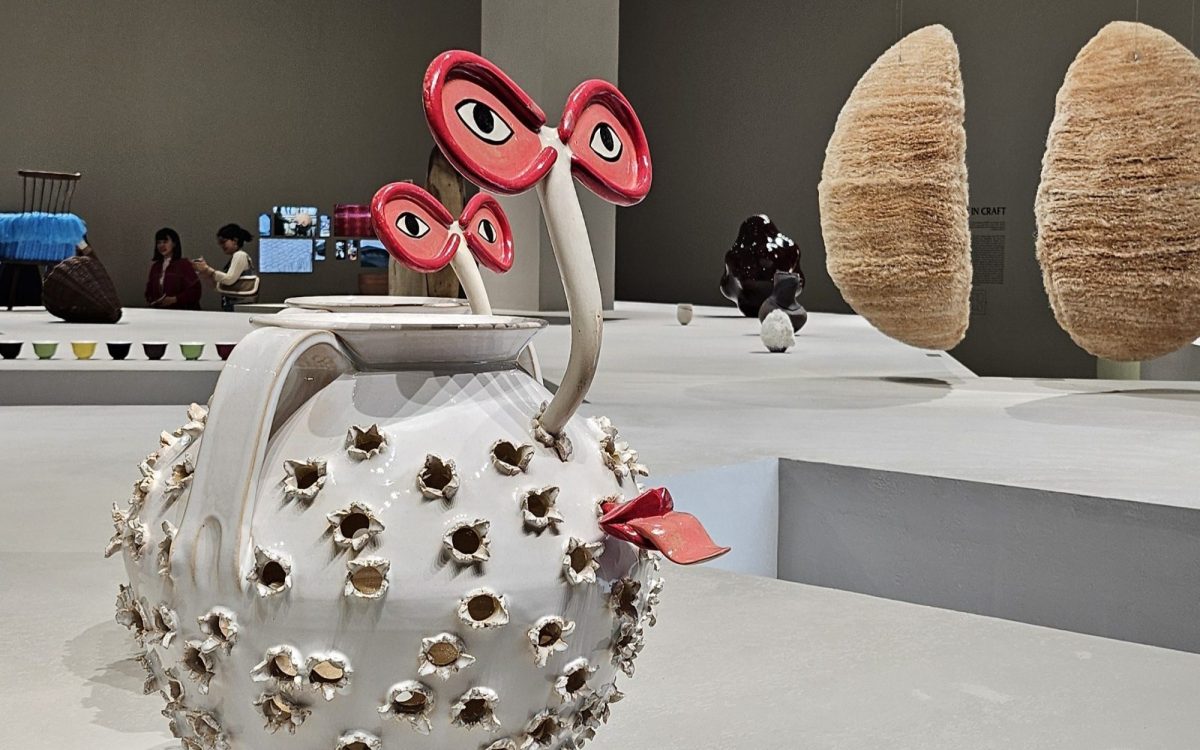In this article:
14th Shanghai Biennale: Cosmos Cinema
14th Shanghai Biennale: Cosmos Cinema (9 November 2023 to 31 March 2024) was curated by e-flux co-founder and artist, Anton Vidokle, who took viewers deep into the abyss of cosmology and science, and their relationship (or tension) with humanity.
With pieces by over 80 artists working in China and internationally, the expansive showcase sought to examine the links between the cosmos and cinema as windows into a space/time that is beyond the real life experiences of most of us.

Held within the concrete walls of the Power Station of Art (上海当代艺术博物馆), this iteration of the Shanghai Biennale captured our fascination with the universe while simultaneously highlighting the minuscule influence we humans have in its grand presence. Ambition and greed comes into play, as does loneliness, disconnection, fantasy and belonging.
The Biennale offered a rich breadth of works up for contemplation, though the layout and expanse of the show also at times provoked a sense of disorientation. Has our persistence regarding extraterrestrial exploration led us astray? There seemed to be a level of general pessimism in the show, from Jonas Staal’s depressing light-box documentation of non-human animals that have either perished or survived from space expeditions, to Julieta Aranda’s bone-chilling video narrative of survival in a ruthless universe.
For this writer, the work that was most successful in creating an out-of-body experience was Armenian-Lithuania sound artist Andrius Arutiunian’s You Do Not Remember Yourself (2022). In a darkened room with the spotlight on one single brass sheet, the artist created what he called ‘aural cosmologies’ through a speculative instrument reverberating hypnotic notes. Having stepped into its majestic presence, the viewer was all but forgotten.
Rockbund Art Museum
The Rockbund Art Museum (RAM, 上海外滩美术馆) reopened at the end of 2023 with ex-Guggenheim Museum curator, X Zhu-Nowell, at the helm after 10 years of reconstruction and rehabilitation. The building itself has a complicated colonial history, housing the former Royal Asiatic Society from 1933 and later the previous Shanghai Museum. It is located in close proximity to Shanghai’s iconic Bund, which was a hub for financial and commercial activity during 19th century international settlements.
During a press tour, Zhu-Nowell told ArtsHub that RAM’s 2024 Spring Program, Complex Geographies, sought to reckon with the building’s colonial legacy. Zhu-Nowell said, ‘In a way, I wanted to think about this building as an embodiment of that history, knowledge and experience, but also understanding that in the 21st century – what does it mean to be operating a non-profit research institution in Shanghai now?’
It’s about allowing for ‘different forms of knowledge’ built on engaging the public in a non-hierarchical manner.
This can be seen on RAM’s second floor with Singapore and Berlin-based artist Ming Wong’s AUUUUDITORIUM, an installation space that also acts as a public lecture and discussion room for programming and collective knowledge sharing. It plays into the space’s original purpose as the Wu Lien-Teh Auditorium in 1933.
From the fourth to sixth floors, Hu Yun’s Mount Analogue sees the Shanghai-born artist draw on personal and historic events that transverse time and geographies. Visitors can embark on different self-directed routes of varying difficulties after picking up an exhibition pamphlet, each route focusing on a cornerstone of Hu’s research for the show. The exhibition scrutinises expeditions and colonial narratives through staging offbeat examples of the early natural history museum in China, as well as the Royal Asiatic Society Museum.
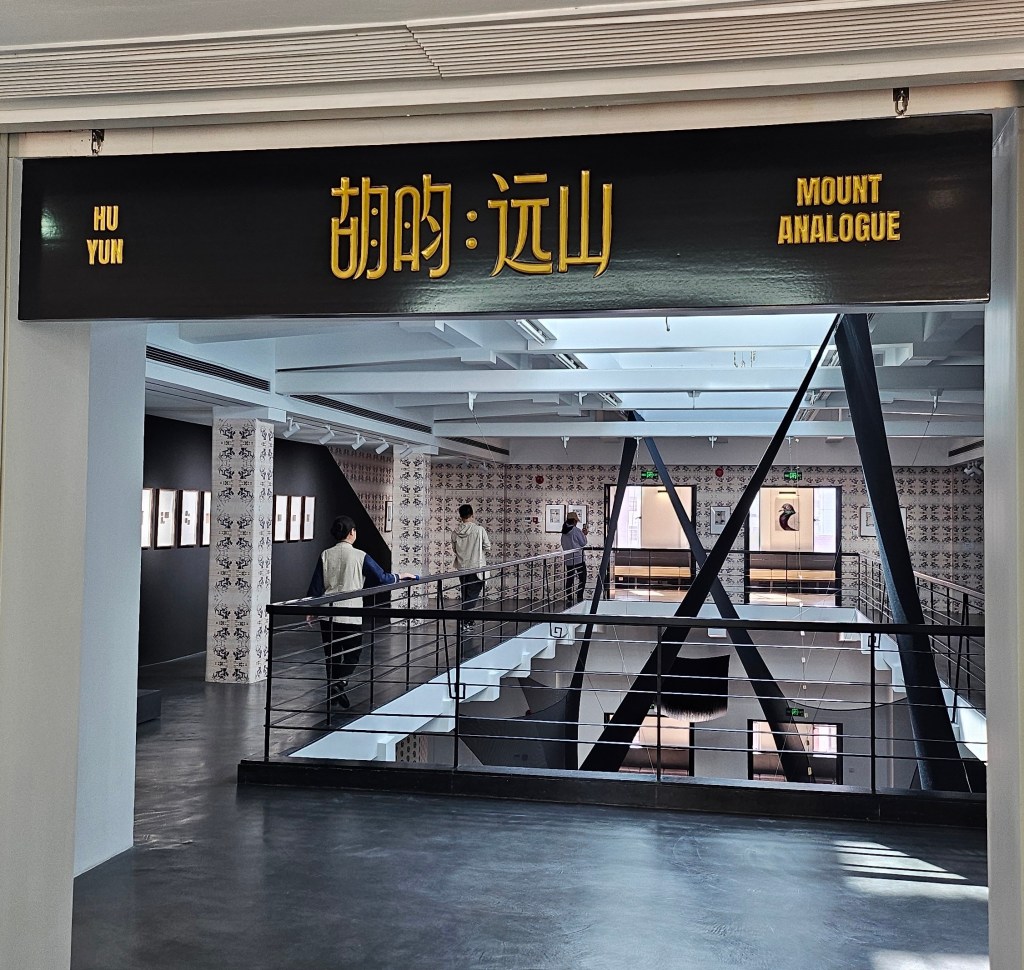
This thorough line is continued in Shanghai Palimpsest: Restating the R.A.S. Library on level three with archival footage, books, photo slides and a transformation of the space by Shanghai-based artist Zhang Ruyi.
RAM also sits directly opposite international galleries, including Perrotin and Lisson, with a stylishly designed precinct at street level.
Both Hu Yun: Mount Analogue and Shanghai Palimpsest are on view until 25 August, with AUUUUDITORIUM hosting ongoing programs.
Museum of Art Pudong
Opening in 2021 and designed by French architect Jean Nouvel, the Museum of Art Pudong (浦东美术馆) is another new addition to Shanghai’s art landscape.
On the weekday that this writer visited, the gallery spaces were well attended by curious art viewers, with the Museum hosting a powerhouse selection of Surrealism works from the National Galleries of Scotland and Caravaggio. Wonders of the Italian Baroque (closed 12 April).
Fantastic Visions: 100 Years of Surrealism from the National Galleries of Scotland brought together emblematic artworks from the era to celebrate the 100th anniversary of the publication of the Surrealist Manifesto. The show embodies the full quirk of Surrealist figures, from Salvador Dalí to René Magritte, Max Ernst and Dorothea Tanning. One space features a wallpaper-sized archival photo of Dalí wearing a diving suit (that nearly suffocated him) posing with his peers at the International Exhibition of Surrealism in 1936.
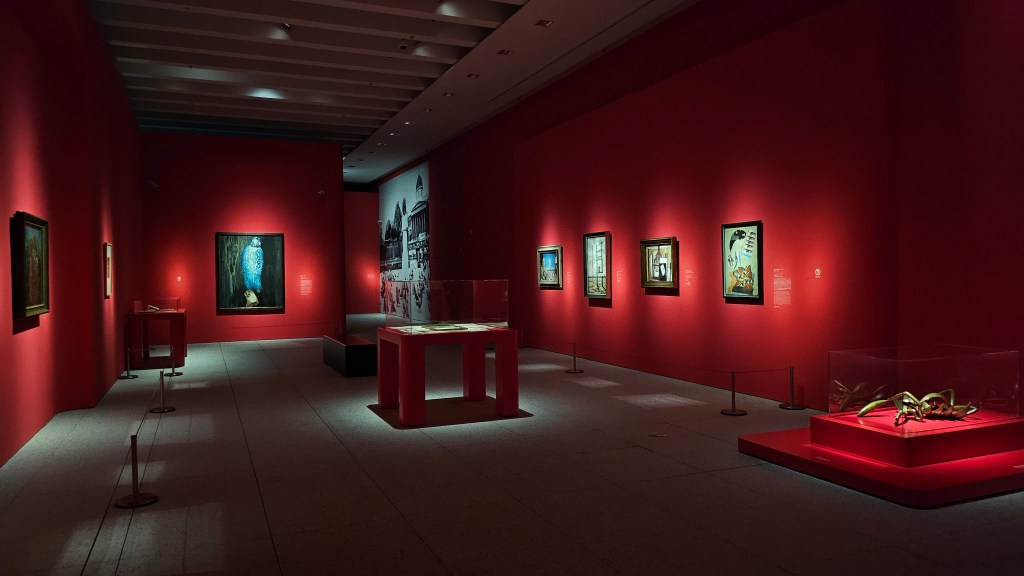
Hallmark works on display include Alberto Giacometti’s Woman with Her Throat Cut in both drawing and sculptural form as a side-by-side comparison, Ernst’s painting Max Ernst Showing a Young Girl the Head of his Father (1926), Dalí and Edward James’ Lobster Telephone, Toyen (Maria Čerminová)’s The Message of the Forest (1936) and more. The exhibition is engagingly co-organised by Museum of Art Pudong with the National Galleries of Scotland, and on view until 31 August.
Read: The world’s most anticipated museums opening in 2024
Caravaggio at Museum of Art Pudong is said to be the first Caravaggio-themed exhibition in China, and is a first-time collaboration between the Museum and Galleria Borghese in Rome. It is followed by another ambitious exhibition of European lineage, Ages of Splendor: A History of Spain in the Museo del Prado, opening on 23 April.
The only Chinese artist shown in the institution when this writer visited was Xu Bing: Gravitational Arena, a sublime sculptural installation of Xu’s made-up characters converging into a tornado that zips into a single point on a mirrored floor. On the underground level is a succinct exhibition where Xu lays out his process of creating the piece.
M50
50 Moganshan Road, or M50 as it is commonly known, is an art district in Shanghai that is home to contemporary galleries, artisans, design studios, jewellery workshops, cafés and more. It’s a popular tourist attraction offering plenty of photo opportunities and things to explore, but it has taken a while for M50 to gain a foothold among the plethora of the more polished institutions in the city.
Exploration in the district is pretty much self-guided, and different galleries have their own opening times and programs, while other spaces have remain unoccupied for years. It also hosts an array of commercial, not-for-profit and institutional activities, spanning fine art, decorative arts, interior design, art supplies and so on.
Nonetheless, highlights for this writer included The Weaver and The Spoke by Daniel Dewar and Grégory Gicquel at Antenna Space (also part of the gallery’s booth at Art Basel Hong Kong 2024), a solo exhibition of paintings by Guo Sun at Gingko Space, the Limited Intentionality group show at ShangART Gallery featuring minimalist sculptures with philosophical thinking, and Whispers of Color by Norwegian artist Fanny Brodar at Caelis Galeria. Another gallery in M50 worth mentioning is Cospace, which recently exhibited at Hong Kong’s Art Central art fair.

island6, home of Liu Dao Art Collective, is also worth checking out for first-time visitors. If offers fascinating insights into the influential local art group that works with melding video, futuristic and sci-fi imagery and social commentary, but the exhibition itself has barely changed since this writer last visited around five years ago.
Ultimately, there are two approaches for those looking to visit M50 – select a few galleries, see what’s on and plan your way around, or arrive and let curiosity be the guide.
Fotografiska Shanghai
With locations in New York, Berlin, Stockholm and more, Fotografiska has secured its position as the centre for contemporary photography in Shanghai with well-curated exhibitions that present, interrogate and push the medium.
Fotografiska Shanghai’s exhibition of French-American photographer Elliott Erwitt, who died last year at the age of 95, is a delightful tribute to not only his craft, but his humour and way of seeing the world around him. Erwitt is someone who made photography genuinely accessible to a general audience without losing any of his nuance, and the selection of quotes that run throughout the exhibition also show that the photographer could speak through words just as well as images. Through the Playful Eyes of Elliott Erwitt is on view until 2 June.
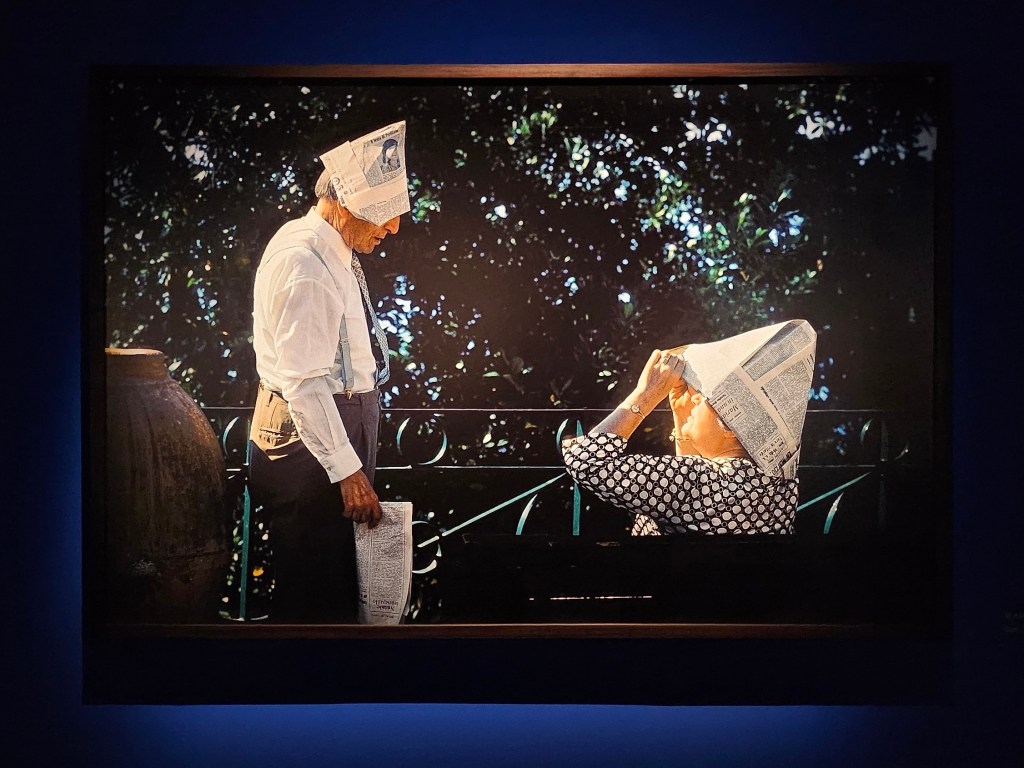
Also presented is The Via Combusta, an exhibition curated by emerging Chinese artists Gan Yingying and Zhou Yichen. The show is the winning proposal of the third Jimei x Arles Curatorial Award for Photography and Moving Image, on view until 21 April.
On the bottom level of Fotografiska Shanghai is a solo show of Canadian artist Sabrina Ratté, with installations and moving images projected onto the walls of the gallery. It’s a fever dream that blends electronic waste and nature in a synthetic technicoloured environment.
Fotografiska Shanghai also sports a ground-level café next to the leisurely riverside path of Suzhou Creek, an extensive gift shop and a rooftop eatery/wine bar. It’s a laid back space where one can easily spend half a day given pleasant weather.
Fashion and art
Shanghai is often deemed the fashion capital of China, and this is exemplified not only through street styles, designer boutiques and fashion events, but also exhibitions and retail displays.
LOEWE Crafted World showcased the possibilities of a fashion exhibition successfully capturing brand identity through highlighting craftsmanship, innovation and artistic ambitions. The Spanish luxury brand takes visitors on a journey that traces the history of Loewe from a leather workshop in 1846 Madrid, to its global reputation today.
From the very first exhibition room in LOEWE Crafted World, it is clear that fashion and art are inseparable for the brand, with notable artworks on display alongside garment designs, posters, early prototypes and newspaper clippings. The exhibition contains a series of ceramics by Pablo Picasso, Irish sculptor Siobhán Hapaska’s Repressed Apple (2015), Anthea Hamilton’s Giant Pumpkin No.6 and more.
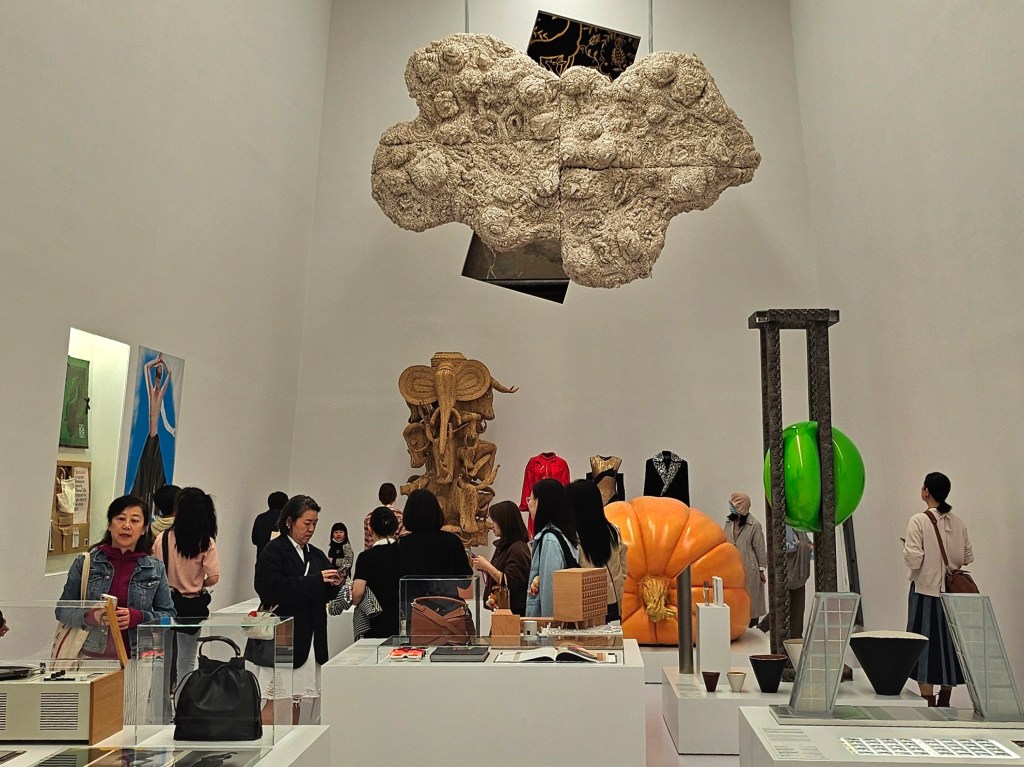
A spacious arena is dedicated to entries and highlighted works from the LOEWE FOUNDATION Craft Prize, an annual initiative for artisans across the world with displays ranging from ceramics to furniture.
LOEWE Crafted World is a generous offering that takes viewers backstage as much as it serves up the glitz and glam of the catwalk. The exhibition is free, with a world tour to be announced – hopefully including Australia as one of its stops.
Another fascinating case study in the crossover between fashion, art and retail is Haus Nowhere, the Shanghai flagship store of South Korean eyewear brand, Gentle Monster. Large-scale and hyperrealistic installations create a futuristic world, where robots and cyborgs surround shoppers with carefully curated product placement. Some of the installations have artists’ names attached, such as a lounging figure by Seoul-based sculptor Osang Gwon, while others don’t.

The shopfront has been trending all over social media and there’s a good reason for it – it’s shiny, fun, visually attractive and makes everything in the store feel worth the price tag.
This writer was in Shanghai from 29 March to 6 April.
